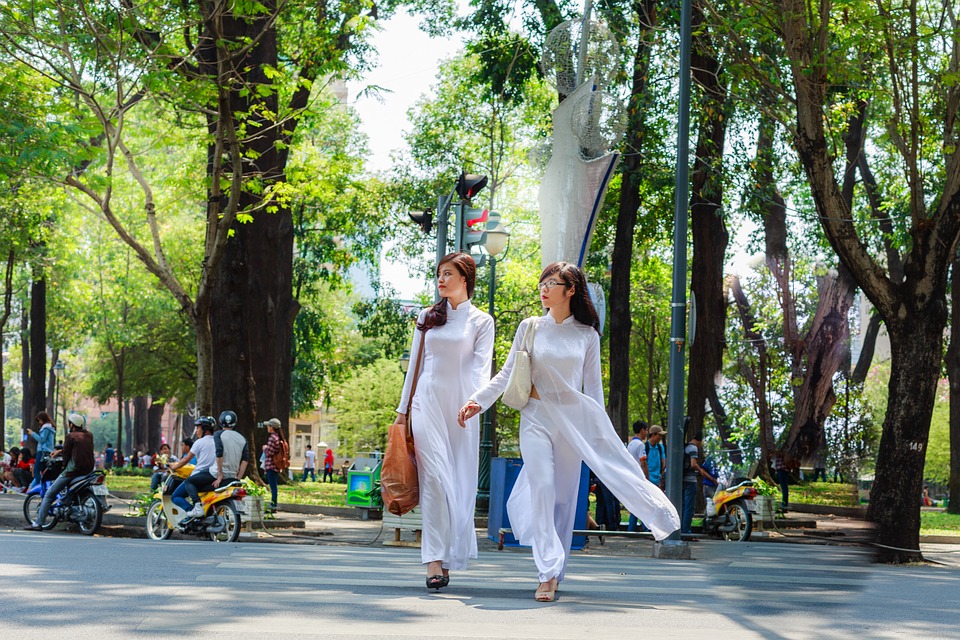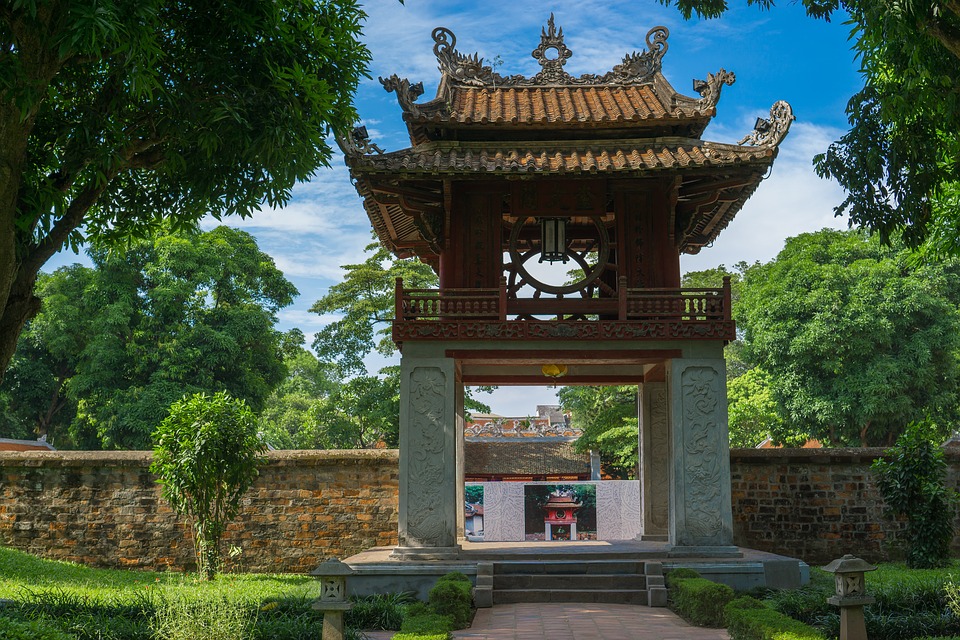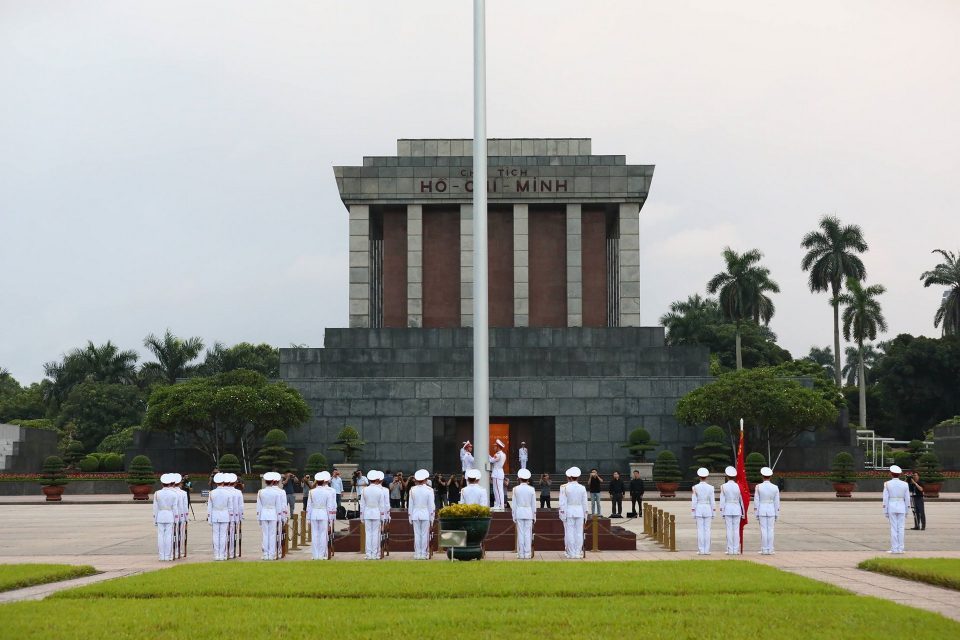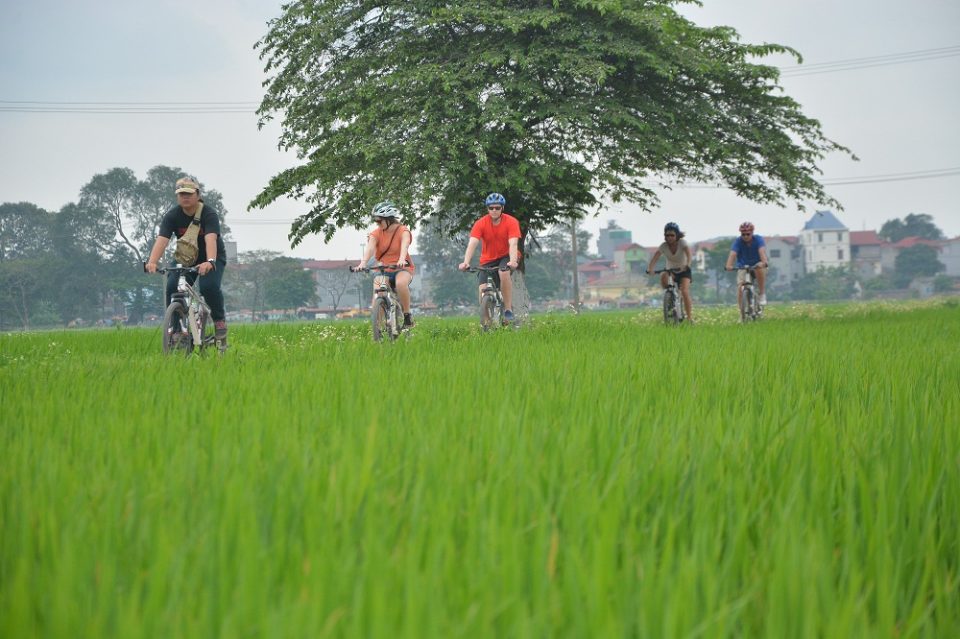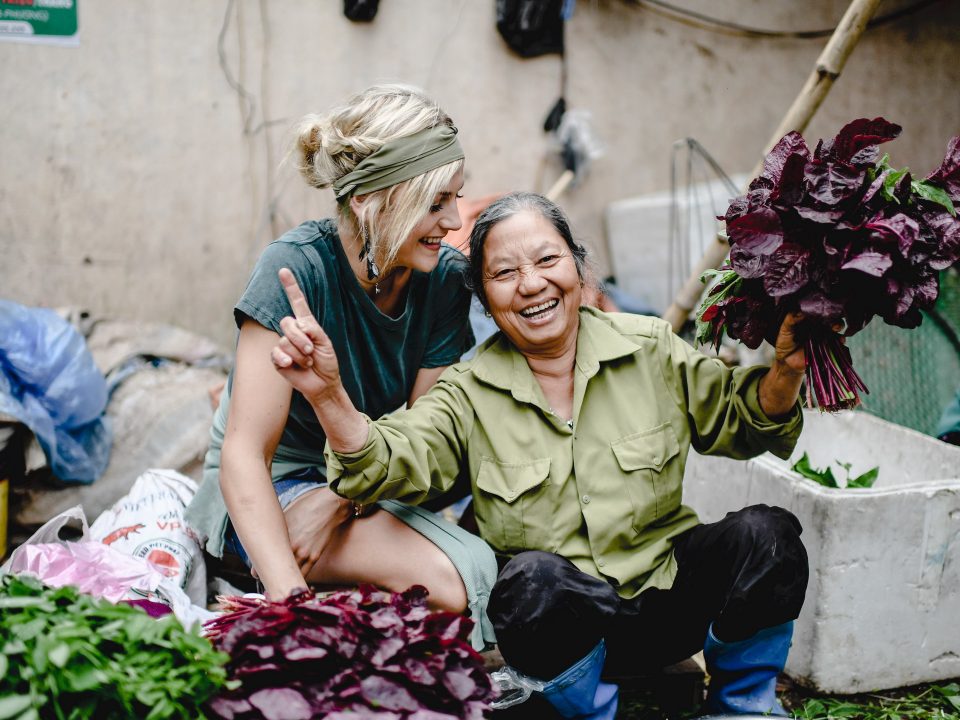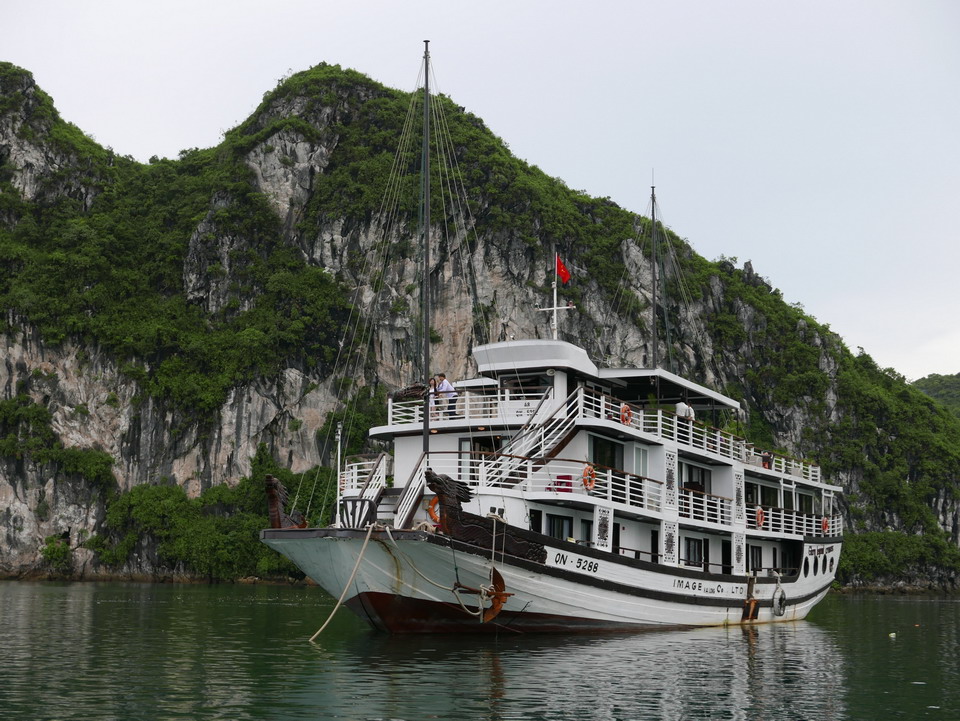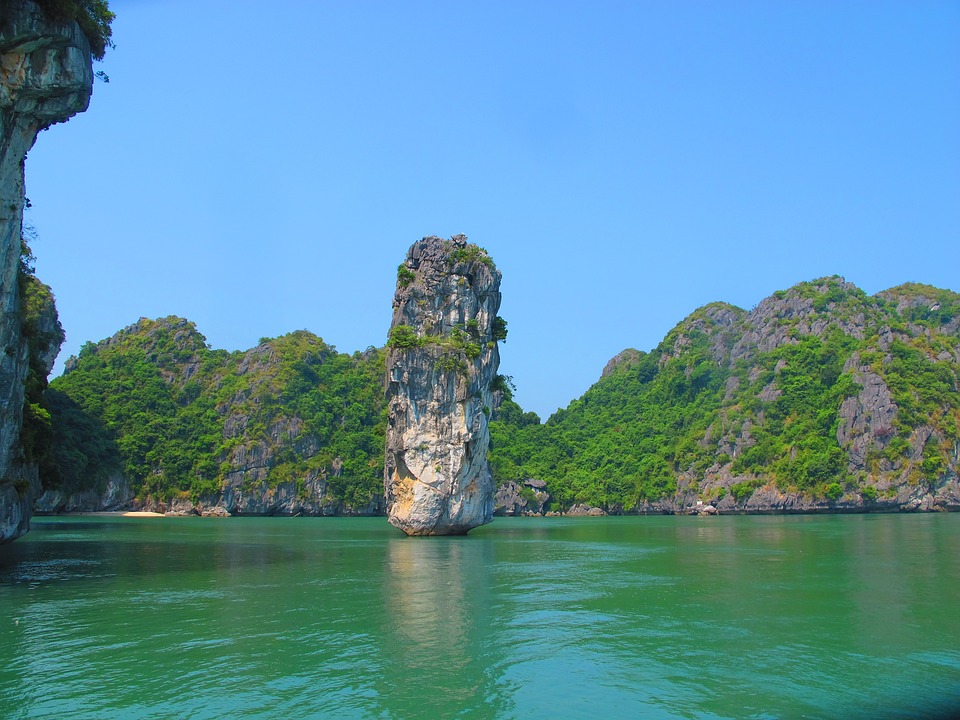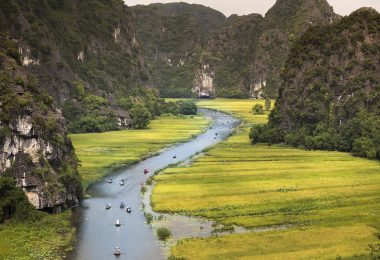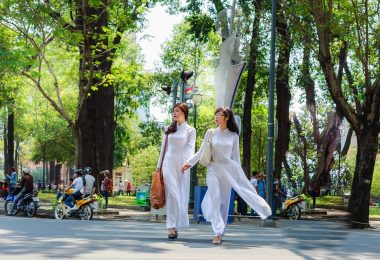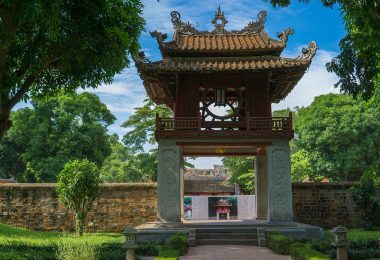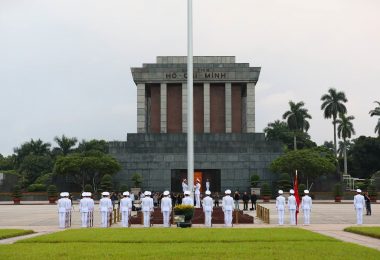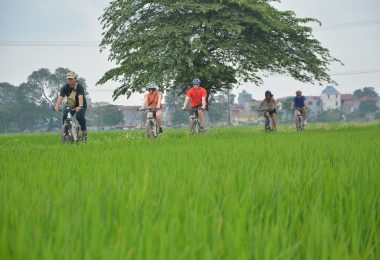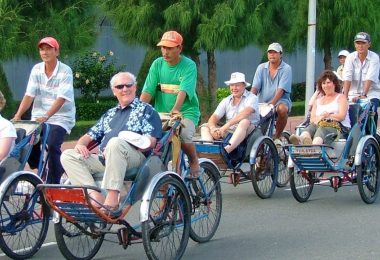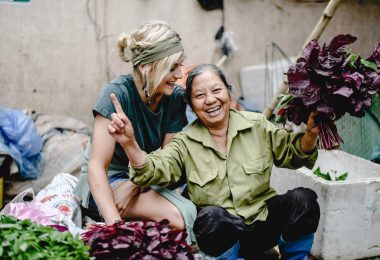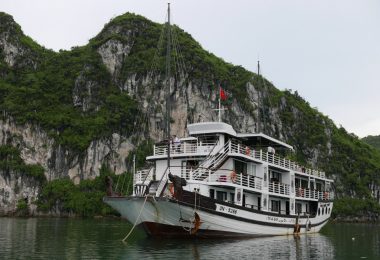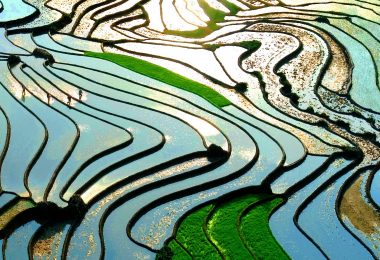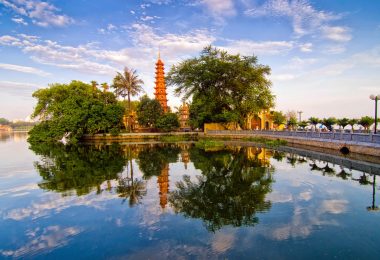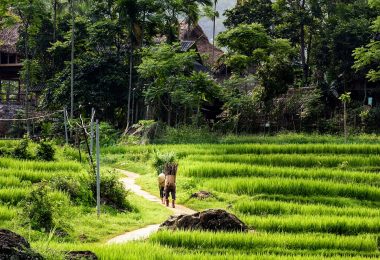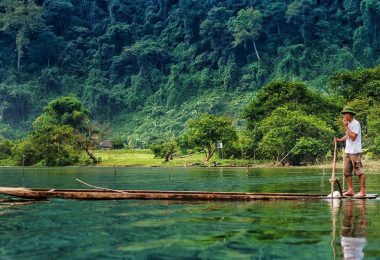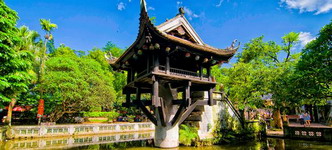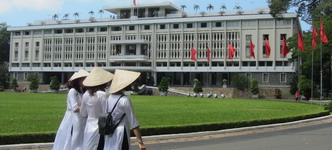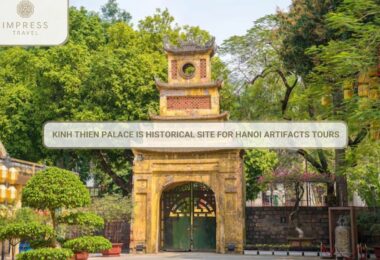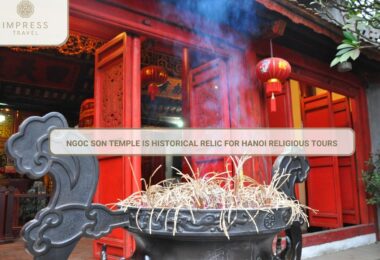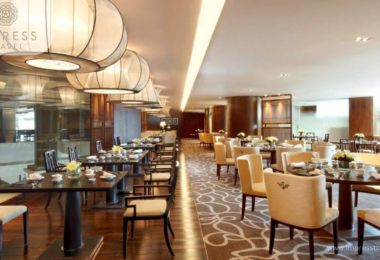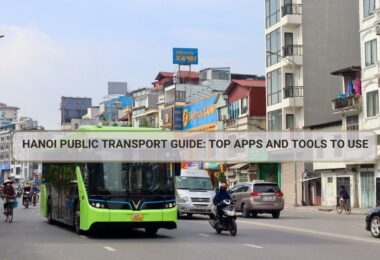Hanoi, the capital of Vietnam, is not only famous for its long-standing historical and cultural relics but is also a great destination for those who want to combine travel and study. Below are educational tourist destinations highlights in Hanoi:
Historical and cultural relics
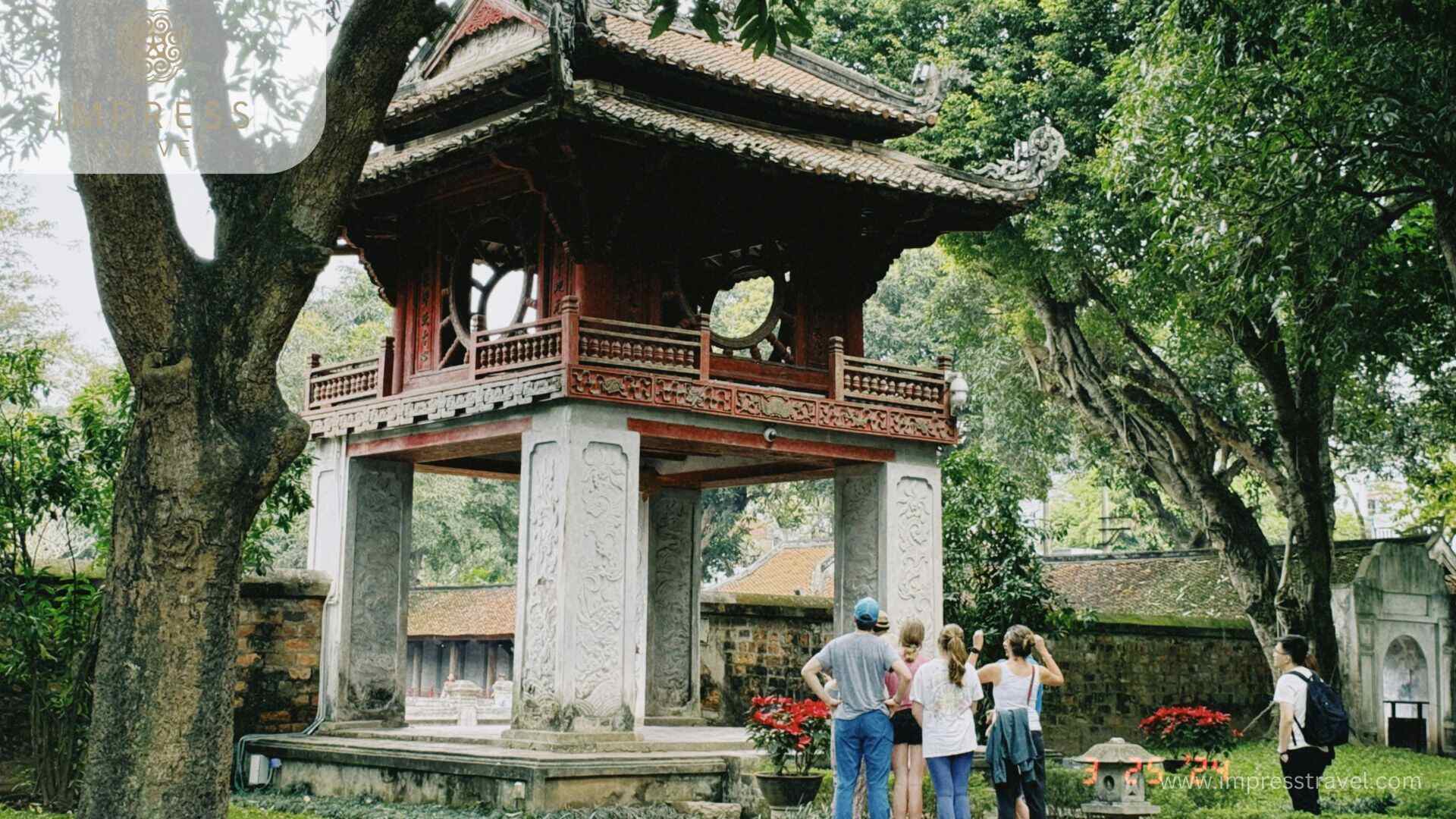
The Temple of Literature
Quoc Tu Giam Temple is one of the most important historical relics of Hanoi, built-in 1070 under the reign of King Ly Thanh Tong. This is the first university in Vietnam, a place to worship Confucius and Confucian sages. The Temple of Literature is not only a symbol of educational knowledge and wisdom but also a place that trained many talents for the country through feudal dynasties.
Architecture: The Temple of Literature was built according to traditional architecture with five main areas: Temple of Literature, Dai Trung Mon, Khue Van Cac, Thien Quang Tinh, and Quoc Tu Giam. The doctoral steles area with 82 stone steles engraved with the names of scholars who passed royal exams is a special highlight, showing the honor and encouragement of learning of Vietnam’s feudal dynasties.
Educational activities: The Temple of Literature regularly organizes educational activities, workshops, and exhibitions on history and culture. Visitors, especially students, can participate in learning programs and learn about the history and cultural values of the Temple of Literature – Quoc Tu Giam.
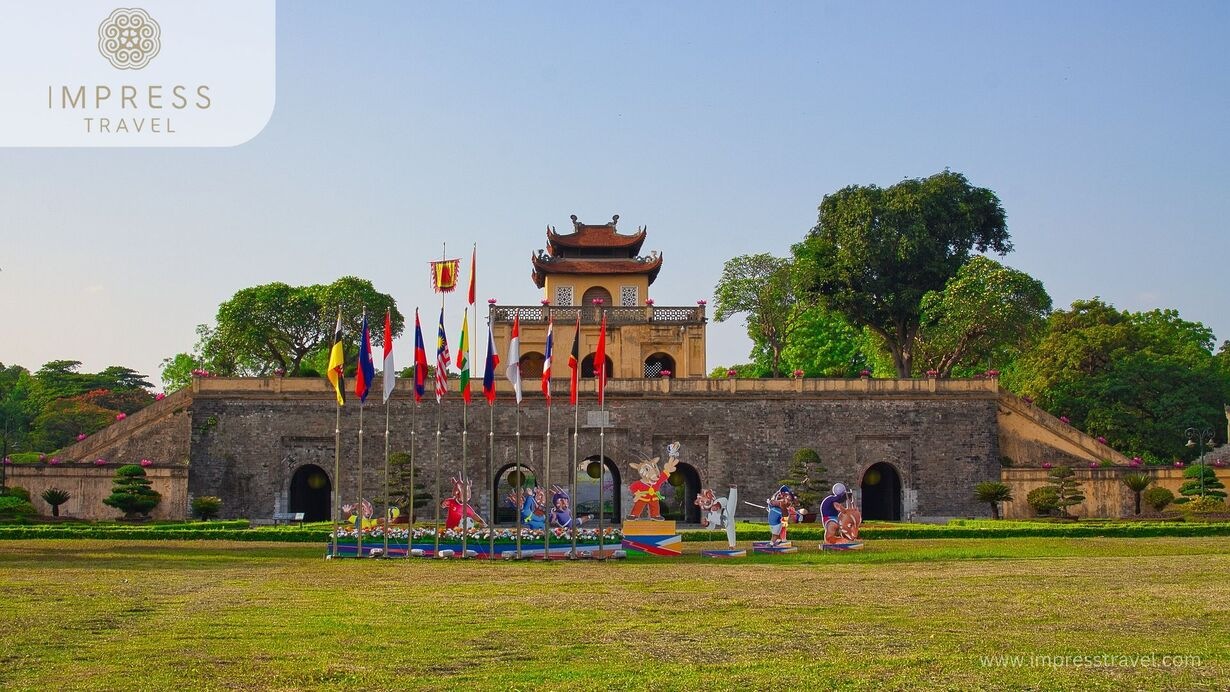
Imperial Citadel of Thang Long
Imperial Citadel of Thang Long is a world heritage site recognized by UNESCO, the political center of Vietnamese feudal dynasties from the Ly, Tran, Le to Nguyen dynasties. Located in the center of Hanoi, this relic includes many ancient architectural works such as the Hanoi Flagpole, Kinh Thien Palace, Hau Lau, and archaeological sites.
Explore history: Visitors to Thang Long Imperial Citadel can learn about Hanoi’s rich history, from the Dinh – Early Le period to the Nguyen Dynasty. Archaeological artifacts and architectural works here clearly demonstrate the development of the capital through historical periods.
Sightseeing activities: Thang Long Imperial Citadel regularly organizes tour programs to guide visitors to learn about the history and culture of the relic site. This is an ideal place for groups of students to visit and learn.
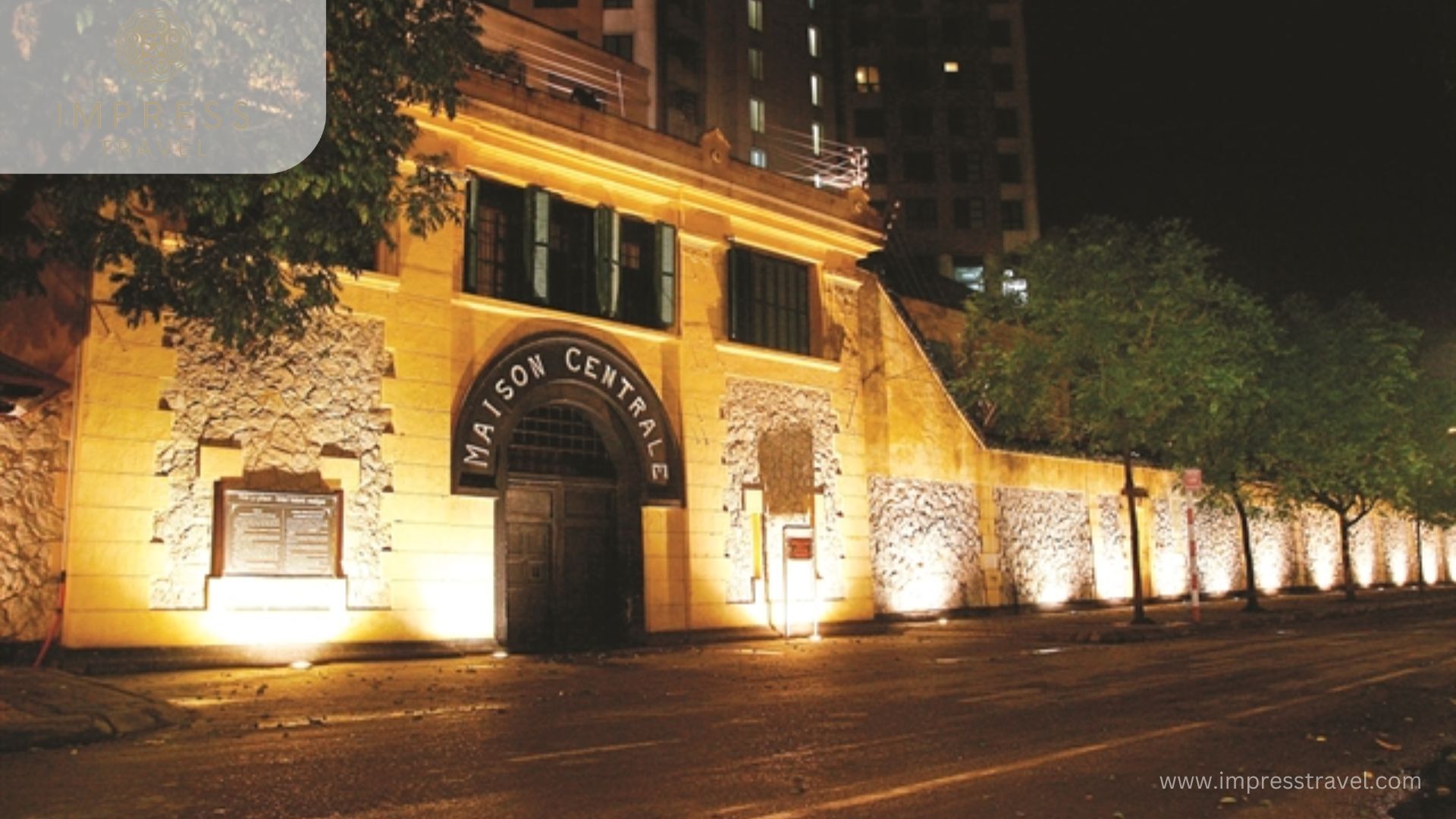
Hoa Lo Prison
Hoa Lo Prison (also known as “Hanoi Hilton" during the Vietnam War) is an important historical site where Vietnamese revolutionary soldiers were detained and tortured during the French colonial period and later by concubines. American attack during the Vietnam War.
History: Hoa Lo Prison was built in 1896 by the French colonialists to detain Vietnamese revolutionary activists. Later, the prison was used to detain American pilots shot down during the Vietnam War. The stories about patriotism, sacrifice and struggle of those detained here are valuable lessons about history and national spirit.
Display: Currently, Hoa Lo Prison has been converted into a museum, displaying many artifacts, documents and images about the lives, activities and struggles of prisoners. Visitors can learn about the history and important events that took place here.
Thang Long – Hanoi Heritage Conservation Center
Thang Long – Hanoi Heritage Conservation Center is a place to preserve and promote the cultural heritage value of the Thang Long Imperial Citadel area. The center organizes many educational activities and research on the history and culture of Hanoi.
Research activities: The Center regularly organizes research, archaeological and conservation activities of cultural heritage. Visitors can participate in study and research programs here to better understand the history and culture of the Thang Long – Hanoi area.
Exhibitions and seminars: The center organizes many exhibitions and seminars on history and culture, helping visitors have a deeper and more comprehensive view of Hanoi’s development through the ages.
Museums and libraries
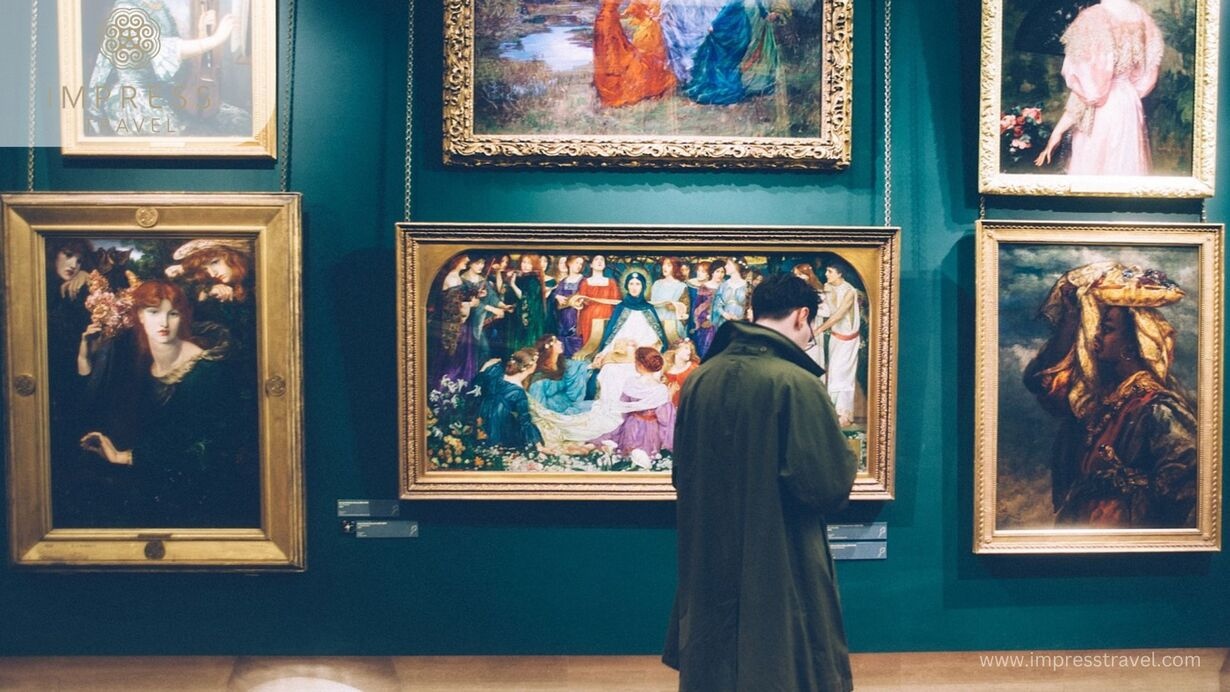
Museums
National Historical Museum Located at No. 1 Trang Tien, Hoan Kiem District, Hanoi, it is a place to store and display thousands of precious artifacts from prehistoric to modern times. Built in 1958, this museum is an ideal destination for those who want to learn more about Vietnamese history.
Artifact collection: The museum displays many precious artifacts, including ceramics, weapons, costumes, and cultural artifacts of feudal dynasties. These artifacts help visitors better understand the development process and important historical periods of Vietnam.
Educational program: The National Museum of History hosts many educational programs, including presentations, workshops, and interactive activities to help students and visitors learn more about Vietnamese history and culture.
Vietnam Art Museum Located at 66 Nguyen Thai Hoc, Ba Dinh District, is a place to store and display typical Vietnamese works of art. The museum has a rich collection of paintings, statues, ceramics and other art objects from different historical periods.
Exhibition: The museum regularly organizes thematic exhibitions, displaying works of art by famous artists and talented artisans. Visitors can learn about the history of Vietnamese art, from folk art to modern art.
Educational activities: The Vietnam Museum of Fine Arts offers many educational programs, guided tours and art discussions. This is the ideal place for those who love and want to learn about art.
Vietnam Museum of Nature Located at 18 Hoang Quoc Viet, Cau Giay District, is a place to display and introduce Vietnam’s biodiversity and geology. The museum has many displays of animals, plants, minerals and rare biological specimens.
Exhibition: The museum displays many rare specimens of animals, plants and minerals of Vietnam. The display areas are vividly designed, helping visitors better understand the country’s biodiversity and geology.
Educational activities: The Vietnam Museum of Nature regularly organizes educational programs, guided tours and discussions on natural sciences. This is the ideal place for pupils, students and those who love science and nature.
Vietnam Museum of Ethnology is located at Nguyen Van Huyen Street, Cau Giay district, Hanoi. This is a place to display and introduce the 54 ethnic groups of Vietnam, demonstrating the cultural diversity and customs of the ethnic groups.
Indoor exhibition area: The museum has an indoor display area with artifacts, costumes, working tools, and handicraft products of different ethnic groups. These artifacts help visitors better understand the life, culture and traditions of each ethnic group.
Outdoor display area: The museum also has an outdoor display area with traditional housing models of ethnic groups such as stilt houses of the Thai people, long houses of the Ede people, and communal houses of the Bana people. Visitors can visit and experience the lives of ethnic groups through these models.
Vietnamese Women’s Museum is located at 36 Ly Thuong Kiet, Hoan Kiem District, Hanoi. This is a place to honor and introduce the role and contributions of Vietnamese women in history and society.
Collection: The museum displays many artifacts, documents and images about the life, work and social activities of women from ancient to modern times. Display topics include women’s roles in the family, economics, politics, culture and social activities.
Educational activities: The museum regularly organizes educational programs, workshops, and exhibitions aimed at raising awareness of the role and contributions of women in society. This is an ideal place for students and tourists to learn about the history and culture of Vietnamese women.
Ho Chi Minh Museum Located at Ba Dinh Square, is a place to store and display artifacts related to the life and career of President Ho Chi Minh. This is an important destination to learn about modern history and Uncle Ho’s contributions to the Vietnamese people.
Showrooms: The museum includes many galleries with different themes such as “Childhood and Youth", “Journey to find a way to save the country", “Revolutionary struggle period", and “President Ho Chi Minh’s Legacy". Visitors can learn deeply about Uncle Ho’s life and career through artifacts, documents and images.
Educational activities: The museum regularly organizes educational programs, tours and presentations to help students and visitors better understand the ideology and ethics of President Ho Chi Minh.

Library
Vietnam National Library is Vietnam’s largest documentation, information and research center, located at 31 Trang Thi, Hoan Kiem District, Hanoi. Established in 1917, the library stores millions of valuable books, newspapers, documents and publications.
Rich resources: The National Library of Vietnam owns a rich collection of documents, including documents on history, culture, science, technology and many other fields. This is the ideal place for researchers, pupils, students and those who love to learn knowledge.
Educational program: The library regularly organizes educational programs, guidance and research support for pupils, students and readers. Activities such as workshops, presentations, and thematic classes help improve participants’ knowledge and research skills.
Conclusion
Characteristic educational tourist destinations in Hanoi not only help visitors expand their knowledge but also bring interesting and meaningful experiences. Each destination offers a unique glimpse into the rich tapestry of Vietnamese history, culture, and science. The educational value of these sites is immense, providing not only a window into the past but also inspiring a deeper understanding of the present and future.
Do not forget to regularly follow our Facebook page and Website for more interesting information about traveling and booking Hanoi tours at the best prices.





































